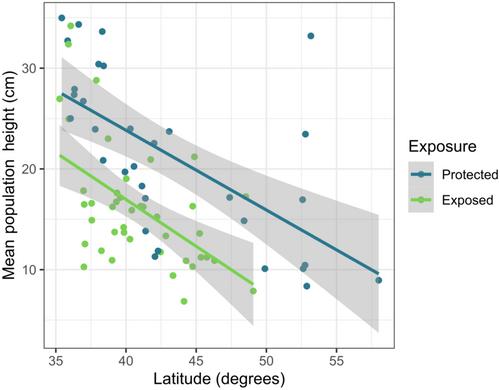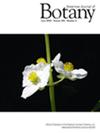Ocean exposure and latitude drive multiple clines within the coastal perennial ecotype of the yellow monkeyflower, Mimulus guttatus
Abstract
Premise
A key goal of evolutionary biologists is to understand how and why genetic variation is partitioned within species. In the yellow monkeyflower, Mimulus guttatus (syn. Erythranthe guttata), coastal perennial populations constitute a single genetically and morphologically differentiated ecotype compared to inland M. guttatus populations. While the coastal ecotype's distinctiveness has now been well documented, there is also environmental variation across the ecotype's range that could drive more continuous differentiation among its component populations.
Methods
Based on previous observations of a potential cline within this ecotype, we quantified plant height, among other traits, across coastal perennial accessions from 74 populations in a greenhouse common garden experiment. To evaluate potential drivers of the relationship between trait variation and latitude, we regressed height against multiple climatic factors, including temperature, precipitation, and coastal wind speeds. We also accounted for exposure to the open ocean in all analyses.
Results
Multiple traits were correlated with latitude of origin, but none more than plant height. Height was negatively correlated with latitude, and plants directly exposed to the open ocean were shorter than those protected from coastal winds. Further analyses revealed that height was correlated with climatic factors (precipitation, temperature, and wind speeds) that were autocorrelated with latitude. We hypothesize that one or more of these climatic factors drove the evolution of latitudinal clinal variation within the coastal ecotype.
Conclusions
Overall, our study illustrates the complexity of how the distribution of environmental variation can simultaneously drive the evolution of both distinct ecotypes and continuous clines within those ecotypes.


 求助内容:
求助内容: 应助结果提醒方式:
应助结果提醒方式:


